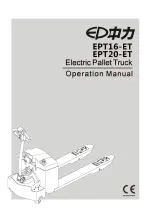
C A B A N D BO DY M O U N T IN G S 1-59
SYSTEM OPERATION
Contents of This Sub-Section are as Follows:
Subject
Page No.
.............................................................
Fundamental Principles of Refrigeration
Refrigerant ...................................................... ...
...................................................
Air C irc ulatio n...................................................................... ... .
1-62
Operation of Individual U n i t s ................................................... ...
GENERAL OPERATION
Some controls and units used with the air con
ditioning system are common to the heating sys
tem. These controls and units are: Control switches,
heater core, air intake and distribution ducts.
The heating and cooling systems operate in
dependently of each other, except under certain
conditions of cooling system operation when there
is an overlapping operation of both systems as
explained previously under "Operating Instructions."
NOTE
Follow the "Heating and Air Con
ditioning Wiring Diagram” (fig. 4), for
electrical circuits and connections.
REFRIG ERAN T-12
PRE5SURE-TEMPERATURE RELATIO NSHIP
The table below indicates the pressure of
Refrigerant-12 at various temperatures. For
instance, a drum of Refrigerant at a temper
ature of 80°F. will have a pressure of 84.1
psi, If
i t is
heated to 125°F. the pressure will
Increase to 167.5 psi. It also can be used con
versely to determine the temperature at which
Refrigerant-12 boils under various pressures.
For example, at a pressure of 30.1 psi, Re
frigerant boils at 32 F.
TEMP. (“F.j
PRESSURE (PSIO)
TEMP. (°F.)
PRESSURE (PSIO)
-21.7
0 (atmospheric
55
52.0
pressure)
60
57.7
-20
2.4
65
63.7
-10
4.5
70
70.1
- 5
6.8
75
76.9
0
9.2
80
84.1
5
11.8
85
91.7
10
14.7
90
99.6
15
17.7
95
108.1
20
21.1
100
116.9
25
24.6
105
126.2
30
28.5
110
136.0
32
30.1
115
146.5
35
32.6
120
157.1
40
37.0
125
167.5
45
41.7
130
179.0
50
46.7
140
204.5
Figure
5
-Pressure-Temperature Chart
FUNDAMENTAL PRINCIPLES OF
REFRIGERATION
The principle of operation of the refrigeration
system is based on a few simple laws of physics
which are stated informally as follows:
1. Temperature is a measurement of the in
tensity of heat.
2. Heat is a form of energy. When heat is
added to a substance, it usually is noticed by an
increase in temperature. For example, in order
to raise the temperature of water from 35 °F . to
100°F ., it is necessary to add a certain amount of
heat.
3. When an object cools, it does not absorb
cold, but rather it loses heat to a colder object or
substance nearby. When a bottle containing warm
liquid is placed on a cake of ice, the ice will melt
and the bottle and its contents will become cool.
Heat from the bottle and its contents is lost to the
ice.
4. When a liquid boils, turning to vapor, it
absorbs a great amount of heat. For instance,
water boiling on a stove is absorbing a great
amount of heat from the burner as it is changing
to the vapor commonly called steam. Boiling is a
rapid form of evaporation.
When a liquid boils, it absorbs heat without
changing temperature. For example, when heat is
added to water at sea level, as when heating on a
stove, the temperature of the water will rise until
it reaches 212°F . If the water remains on the hot
stove, it will boil, but the temperature will remain
at 212 F. The heat being absorbed by the water is
changing it to steam rather than raising the temp
erature.
Refrigerant-12 used in air conditioning sys
tem boils at 21.7°F ., below zero. Thus, if it were
exposed to the air at normal room temperature, it
would absorb heat from surrounding air and boil,
immediately changing to a vapor.
5. When heat is removed from water vapor,
it will condense back into a liquid. For example,
the steam caused by boiling water on a stove will
condense into water on the underside of the cover.
CHEVROLET SERIES 70-80 H EAVY DUTY TRUCK S H O P M A N U A L
Summary of Contents for 70 1969 Series
Page 1: ...CHEVROLET HEAVY DUTY TRUCK SHOP MANUAL...
Page 3: ......
Page 11: ...LUBRICATION 0 4 CHEVROLET SERIES 70 80 HEAVY DUTY TRUCK SHOP MANUAL...
Page 27: ......
Page 119: ......
Page 361: ......
Page 371: ......
Page 427: ......
Page 443: ......
Page 451: ......
Page 493: ......
Page 499: ......
Page 549: ......
Page 555: ......
Page 609: ......
Page 715: ...am...
Page 745: ......
Page 910: ......
Page 913: ......









































